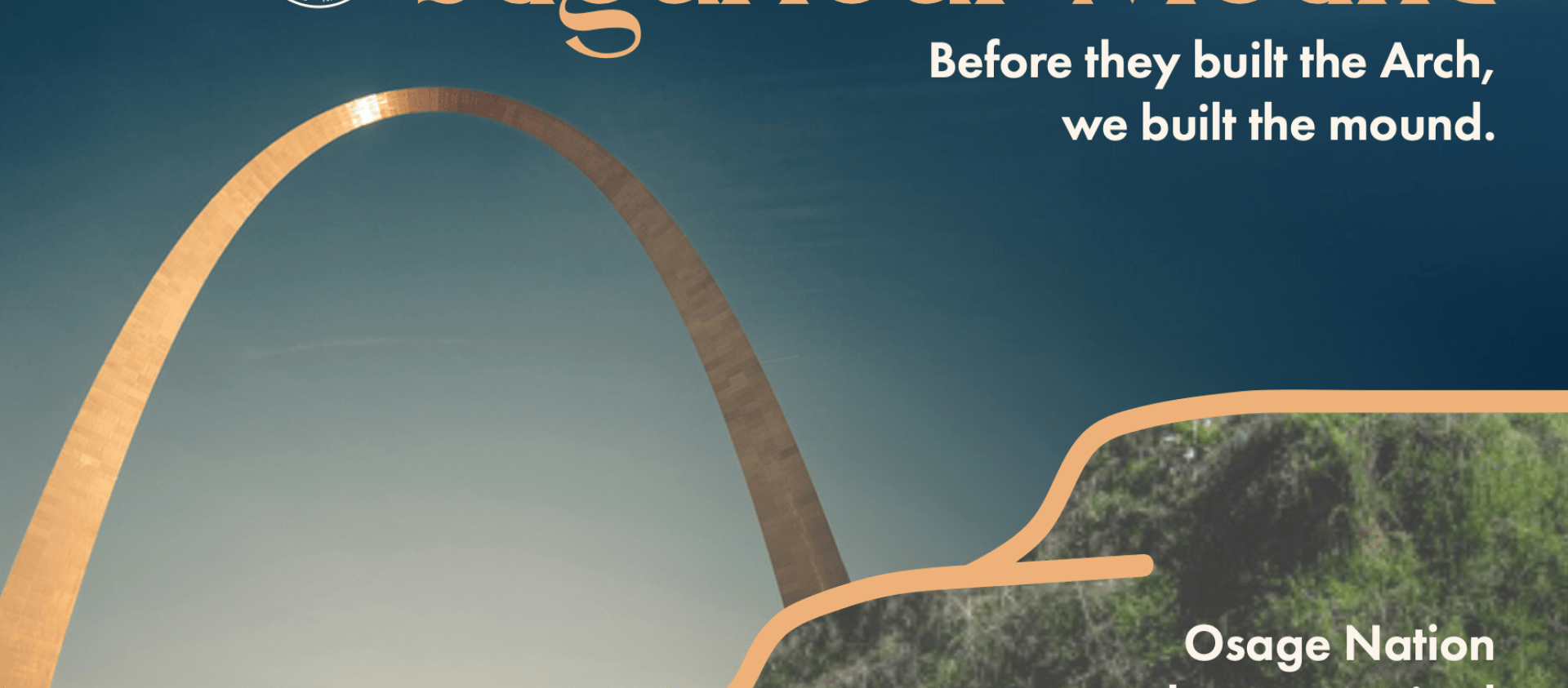
OSAGE NATION RESERVATION, Okla. (September 22, 2025)— The Osage Nation Historic Preservation Office (ONHPO) is proud to announce the complete reacquisition of Sugarloaf Mound. This sacred site was constructed between 600 and 1200 AD when the Osage people inhabited Missouri. Sugarloaf Mound is the oldest known human-made structure in St. Louis. It is the only surviving Native American mound among the hundreds that once existed in the area, often referred to as "Mound City." The reacquisition efforts began in 2008 with the purchase of about one-third of the mound. Now, after seventeen years, it is once again entirely under Osage control. CounterPublic, a St. Louis-based arts and culture organization, played a crucial role in this reacquisition by providing advocacy and financial support.
"The Osage Nation Historic Preservation Office has been dedicated to securing Sugarloaf Mound for the Nation, and we consider this work an honor," said Dr. Andrea Hunter, Osage Nation Historic Preservation Officer. "It has been a long 17-year journey, and I am thrilled to finally see the entire mound come under Osage Nation control. We are extremely grateful for the support of CounterPublic in making this happen; they have been and continue to be an excellent partner in this preservation effort."
The Osage Nation has significant historical ties to the St. Louis area and considers the mound a sacred site. Oral histories from the Dhegiha-Siouan people, along with linguistic studies and archaeological evidence, indicate that Osage ancestors have inhabited the area for over a thousand years. Archaeologists believe the mound may have been either a burial mound from the Woodland period or a platform mound from the Mississippian period, constructed roughly between AD 600 and 1200 during the time the Osage occupied Missouri. This period corresponds with when St. Louis was home to a major Mississippian civic-ceremonial center, which had connections to Cahokia and the East St. Louis Mound Group. European-American settlers initially repurposed mounds for various uses, including houses, beer gardens, and other structures, before they began to completely destroy them. By 1875, nearly all the mounds had been leveled. The mound was listed on the National Register of Historic Places on February 17, 1984. In 1928, a house was constructed at the summit of Sugarloaf, which the Osage Nation purchased in 2009. However, this house was demolished in 2017. In 2025, the Osage Nation, in partnership with Counterpublic, successfully negotiated the transfer of the two properties that make up the remaining mound back to the Osage Nation.
The Osage Nation is seeking funding for both short-term and long-term preservation efforts for Sugarloaf Mound. This includes carefully demolishing the remaining structures, stabilizing the mound, and developing an interpretive center.
"We have a significant amount of work ahead of us to remove all the structures from the properties and stabilize the mound," said Dr. Hunter. "Now more than ever, our office is dedicated to preserving this sacred site while also educating people about our rich history in the St. Louis area."
About Osage Nation Historic Preservation Office: The mission of the Osage Nation Historic Preservation Office (ONHPO) is to preserve the culture and history of the Osage Nation and to share that knowledge with the Osage people. The ONHPO accomplishes its mission by working with federal, state, and local agencies on undertakings that require tribal consultation. The ONHPO also identifies, protects, and preserves archaeological and historic Osage sites within the boundaries of the Osage Nation Reservation and on lands throughout Osage ancestral territories and homelands (referred to as ancestral lands*). The overarching goal of the ONHPO is to address the cultural preservation needs of the Osage people as voiced in the 25-year Strategic Plan and update.
About Counterpublic: Counterpublic is a triennial exhibition reimagining the possibilities of art in public life. Located in St. Louis, Counterpublic connects art with lasting impact by bringing together bold ideas with the region's most pressing challenges. As one of the largest public art exhibitions in the Nation, Counterpublic celebrates and spotlights the St. Louis region as an epicenter of art and culture through new artist commissions, inventive programs, publishing, and civic initiatives.

